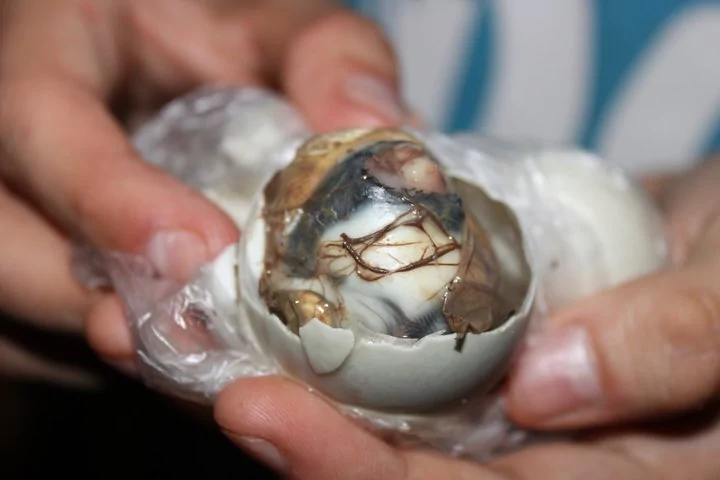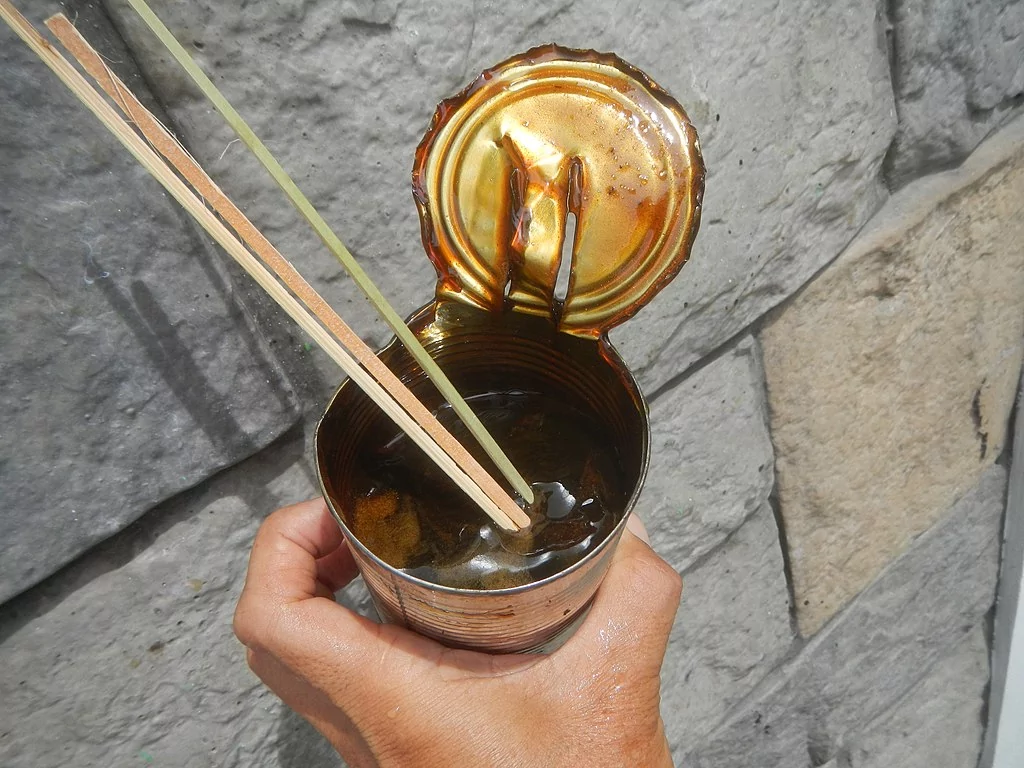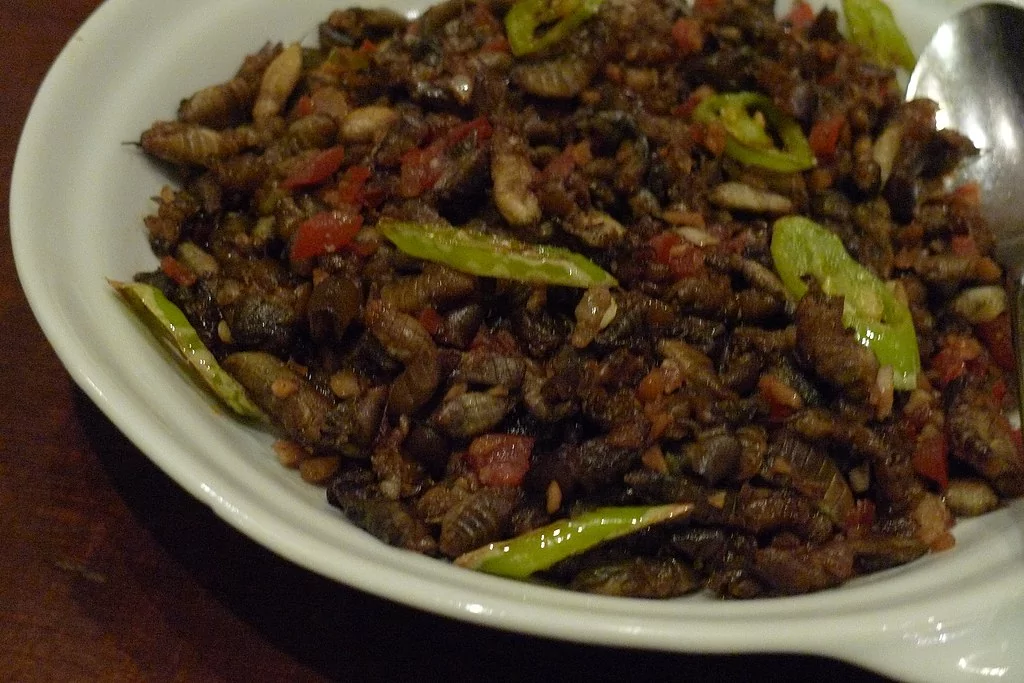
The archipelago nation of the Philippines is known globally for its pristine beaches, ample coral reefs and spectacular rice-terraces, yet little do we hear about its exceptional cuisine, distinguished by some of the most unusual dishes anywhere in the world. It seems as if people in the Philippines are extremely resourceful when it comes to ensuring all parts of an animal are consumed, but to western visitors, it can be a stomach-churning prospect. It's pretty challenging to choose from the hundreds of unique delicacies, yet here six surprising eats that the Filipino cuisine has to offer for the intrepid foodie.
Perhaps the most notorious Filipino dish, and vegan readers might want to skip this description altogether.
Known by expats as an “aborted duck egg”, this is an appropriate and descriptive term. Balut is a partially grown duck embryo, which is part boiled and served in various ways.
When you crack open the shell, you will see a partially formed duck (complete with wings and beak), as well as a whiteish yolk, both of which are a good source of protein for locals.
Balut is commonly prepared as a soup, and the brothy liquid that is formed within the shell is sipped and ‘enjoyed’ first. It is served alongside salt, onions, and chili and is a national aphrodisiac.
If you go out drinking with locals, expect to be offered Balut, as it’s a big part of the Filipino drinking culture.

A cracked open balut egg
photography by: Jerick Parrone
Frankly, you will want to avoid pagpag at all costs.
While it’s seen as a type of recycling service for the poor, it’s something that doesn’t even bear thinking about to those of us that can enjoy fresh, unspoiled food on a daily basis.
Pagpag is the term given to a meat that has been salvaged from the local dump. It is collected by workers who go through the garbage bags and then sell them to local restaurants.
The chef then separates any non-food items from the meat before washing them and removing any bones. The meat is then added to fresh vegetables and a soup before being sold per plate.
It’s a sad reality for many impoverished Filipinos that this is all they can afford to eat on a daily basis. It’s also worth noting that the economy created by pagpag gives people jobs and enables them to care for their families.
This is a small, sweet delicacy in the Philippines that is widely enjoyed by many people – locals and visitors alike.
Sundot kulangot is essentially just gelatinous rice that is cooked with brown sugar and coconut milk, which provides a sweet and moreish snack.
However, when translated into English, sundot kulangot literally means ‘poke a bogey.’ While the snack supposedly tastes nothing like a bogey, the name comes from the way in which you have to extract it from the wooden orb that encases it.
Just like you would pick your nose, you prize the sweet ball out of the orb and place it in your mouth with a finger.
Of all the foods we will introduce in this post, sundot kulangot is definitely the most harmless, and providing you can stomach the strange way in which it’s eaten, you will probably enjoy its sweet taste.

A canned sundot kulangot
photography by: JFVelasquez Floro
If you’ve ever walked down the streets of Manila, you will almost certainly have seen street vendors selling all sorts of insects and creepy crawlies on sticks.
This practice in itself isn’t native only to the Philippines and is common throughout street markets in different parts of Asia.
Kamaru is the local name given to fried crickets that have been picked from rice fields. When fried, they become crunchy and moreish, but the oozing juice coming from the bigger creatures can be somewhat off-putting to tourists who aren’t used to this bizarre texture.
As well as simply fried, you will find kamaru that has been prepared in soy sauce and vinegar, which is popular in Luzon.
People compare kamaru to the texture of fried shrimp, and when doused in soy sauce, it enjoys a salty and sour taste. As Filipino street food goes, you could do a lot worse than fried crickets in soy sauce, so this could be a great one to try if you’re unsure about the others.

A Kamaru plate with vegetables and spices
photography by: Yvette Tan
The name of this dish is ominous. It just suggests that there is something terrifying about its ingredients. So terrifying, in fact, that the Filipinos themselves can’t bring themselves to name the ingredients in the soup’s title.
So, how bad is it really?
You can decide for yourself. The main ingredients in soup number five are the penis and testicles from a bull. It is considered to be quite the aphrodisiac in the Philippines and is surprisingly popular with both men and women.
When mixed together in a warm, meaty broth, soup number five is surprisingly enjoyed by those that dare to try it. While the texture of the testicles can be a little chewy, you would be amazed at how many people actually order this dish.
The strange and ominous name of the dish comes from its first appearance on a menu. When it was introduced by the restaurant in the Philippines that pioneered the dish, it was listed as the fifth soup on their menu.
As such, the restaurants that followed suit and added this aphrodisiac to their menu kept the name very simple and called it soup number five. To be fair, this sounds more appealing than “Bull Penis Soup”.
Etag is popular in Sagada but can also be found in different parts of the Philippines. Not that we would recommend you go looking for it.
The dish is innocuous enough, but it’s the way in which it is stored and then eaten that just makes no rational sense. Etag is made from salted pork that is cured and stored in a jar (or sometimes air-dried) for several weeks or months.
Instead of being refrigerated, it is left in the heat. The darker it becomes, the tastier it is presumed to be. By the time it’s deemed ready for consumption, it gives off a foul odor and is normally crawling with maggots.
To the uninitiated, a slab of meat crawling with maggots is one of the worst foods imaginable. However, when it is aged and washed, it is then grilled and served with rice and local vegetables. In the mountain province of the Philippines, this smoked and cured ham is served at the annual Etag Festival that is held every February and forms part of the indigenous culture.